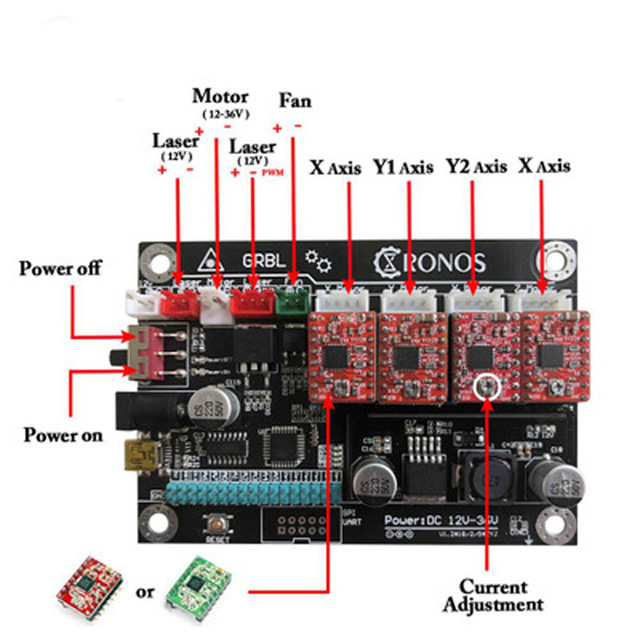
- #GRBL CONTROLLER SERIAL#
- #GRBL CONTROLLER DRIVERS#
- #GRBL CONTROLLER PC#
- #GRBL CONTROLLER PROFESSIONAL#
The LCD unit that is attached to the GT2560 accepts SD cards (formatted as FAT 32) so you can work independantly of a PC. BUT- it is also possible to save the CNC file output from Esticam and put it on an SD card. Then I use Esticam to send the Gcode via a USB cable in the GBRL format to the GT2560 board.

STL file in the highest resolution ($Fn at 128 or higher) and import the STL file in Esticam. I first make my design in Openscad, export the design as. The required Gcode can easily be made with Esticam. And= the display also shows the status of the stepper motor (errors, missed/corrected steps etc). I also added the tiny LCD’s into the closed loop units, this makes it possible to perform local management like the initially required one-time calibration of each stepper without the need for a PC. The max Amps is 4 Amps per unit and this is enough to have good CNC results.
#GRBL CONTROLLER DRIVERS#
These closed loop drivers get attached to the rear of the Nema23 stepper motors and use the 24 Volts from the wiring to the GT2560 driver socket. By doing so, I don’t need the lumpy seperate 6600 driver units and I never miss a step. The nice thing about this board is that it can be flashed with the arduino IDE, and I like the board especially because I can plug in the NEMA23 closed loop stepper motor cables directly in the driver connectors of the GT2560 board. The board does not come with the CNC GRBL firmware installed, you can get the required arduino library HERE for the Arduino Mega with the add-on RAMPS 1.6 board and HERE for the GT2560 integrated board! The board has a budget price and utilizes an atmega chip with great performance. At least for now, and maybe later I may change to an RRF3 board with a good remote CNC interface like the Mellow Fly-CDY-V2. In my search for the best affordable CNC motherboard for my new to build Indymill CNC machine I finally chose the GT2560 from Geeetech as best compromise.

#GRBL CONTROLLER PROFESSIONAL#

#GRBL CONTROLLER SERIAL#
The community has already ported it to multiple processors, and “terjeio” uses the new PIO serial data coprocessor built into the onboard Raspberry Pi’s RP2040 MCU to create a branch for the Raspberry Pi Pico board. If I make a mistake, please correct me in the comments. The driver maintains a fast pulse within a short local connection.
#GRBL CONTROLLER PC#
My limited understanding is that you need a PC (or Raspberry Pi) to send instructions to grblHAL, but this is done via a standard USB or Ethernet connection that is less burdensome to the grblHAL hardware.


 0 kommentar(er)
0 kommentar(er)
